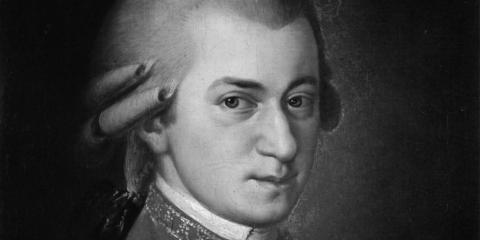MCO’s “Mozart Quintet” can be heard on Thursday 19 November 8:30pm AEST on Melbourne Digital Concert Hall via live stream and live in the studio audience at the Athenaeum Theatre, Melbourne.
Johannes Brahms
Brahms String Quintet No 2 in G major Op 111
I. Allegro non troppo, ma con brio
Johannes Brahms (1833–1897) composed two string quintets scored for two violins, two violas and cello. The String Quintet No 2 was completed in the summer of 1890 and had its first performance on 11 November in Vienna. Although he intended this to be his last composition before he retired, he went on to compose the Clarinet Trio Op 114, Clarinet Quintet Op 115, and the two Clarinet Sonatas Op 120 (all with alternative scoring for viola instead of clarinet), and four sets of piano pieces Opp 116, 117, 118 and 119.
The Quintet is in four movements but in this performance we are hearing only the first. The Allegro non troppo, ma con brio is derived from sketches for a fifth symphony that never eventuated. The movement is in sonata form and opens with an arpeggiated theme on the cello. The contrasting themes are presented within an expansive orchestral texture. Throughout, the 9/8 meter conveys a swaying feel producing considerable rhythmic interplays.
Wolfgang Amadeus Mozart
Mozart String Quintet in C major K515
I. Allegro
II. Andante
III. Menuetto. Allegretto
IV. Allegro
Wolfgang Amadeus Mozart (1756–1791) completed the String Quintet in C K515 in April 1787 and it was first performed in Vienna in 1789. Scored for two violins, two violas, and cello, the work was conceived as one of a contrasting pair, with the String Quintet in G minor K516 composed one month later. Between 1773 and 1791 Mozart composed six string quintets with this combination of instruments.
The opening Allegro in sonata form is grand and expansive. The musicologist Charles Rosen described this movement as “the largest sonata allegro before Beethoven”. We see ideas presented and developed through some remarkable counterpoint while exploiting the changing texture of the five instrumental lines.
The Andante is in sonata form without a development section. The movement is essentially a beautifully crafted operatic dialogue between the first violin and the first viola. The effortless melodies are richly embellished and ornamented. The elegant Menuetto is gracious and playful with ever-changing textures marked by dramatic chromatic progressions. The Allegro finale, in rondo-sonata form, is a complex and lengthy movement that provides a fitting balance to the first movement. Though dominated by a leisurely feel it exudes a sense of jubilant exhilaration.
David Forrest

